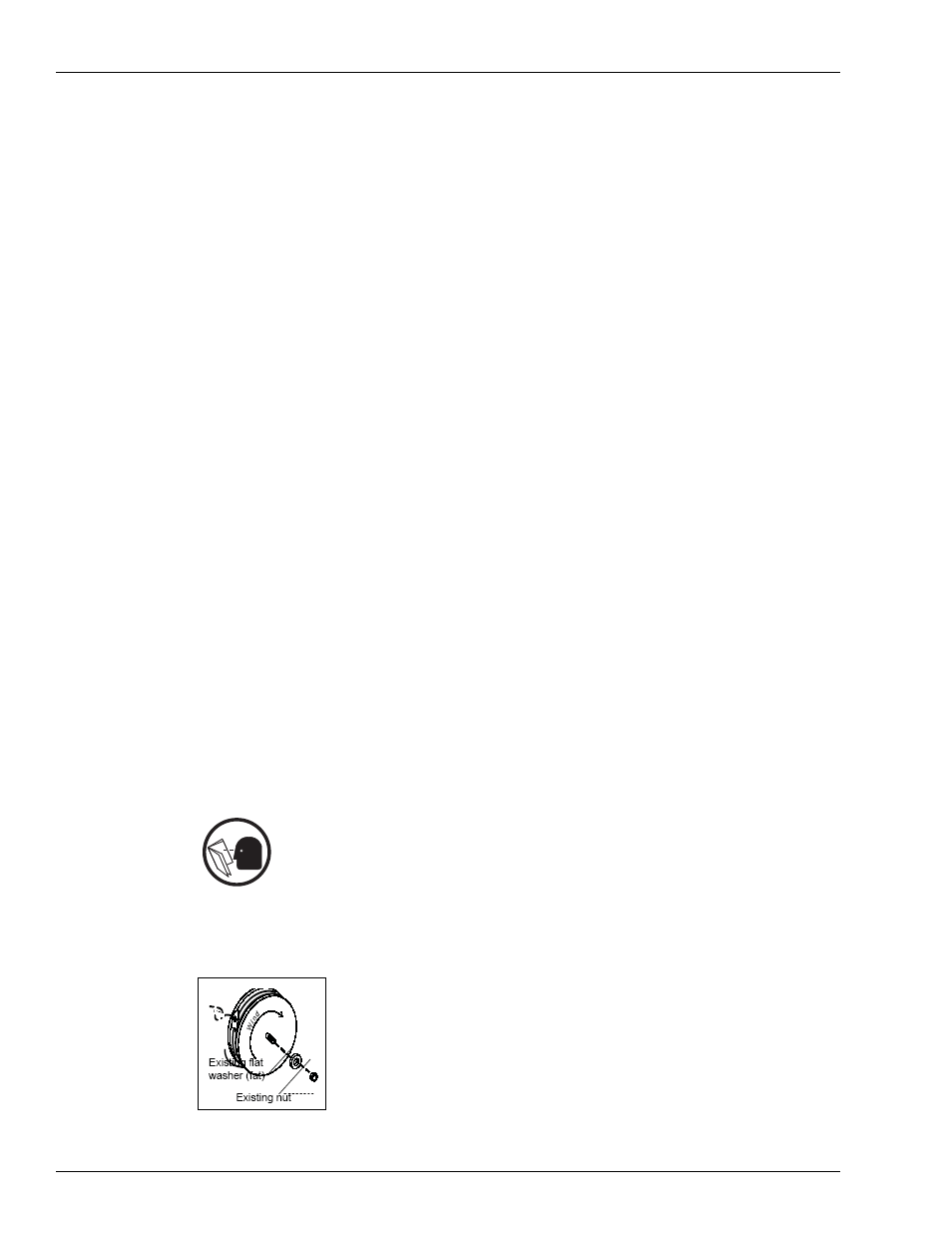Internal hose retrievers and clamps, Internal hose retrievers and clamps -48 – Gasboy Atlas Start-up User Manual
Page 168

Page 6-48
MDE-4334D Atlas™ Start-up and Service Manual · July 2013
Hydraulic/Mechanical Components
Hanging Hardware
4
Connect one probe to the nozzle spout and the other probe to the fuel outlet fitting at the outlet
casting, or other component grounded with the unit frame (see
on
the probe to read properly, the contact surface must be clean and free from fuel or other
contamination.
• Use test leads that are at least 3 feet long (1 meter) and equipped with insulated clips.
• Typical meter test clips are not suited for direct attachment to the hanging hardware. Use
an appropriate clamping device to ensure good contact.
• Keep the nozzle at least 18 inches above the ground and 18 inches away from the
dispenser during this test.
• Wear insulating gloves if the hanging hardware component is handheld during test, or use
an insulated device to support the nozzle. For additional information, refer to
PEI/RP400-02.
5
To test the continuity, turn on the meter to conduct the test.
• Measure the resistance while flexing and moving the hose and nozzle into various
positions that could be reasonably expected during fueling.
• Keep good electrical contact between probes and contact locations.
6
UL330 states that resistance must not exceed 70,000 Ohms per foot (233,000 Ohms per
meter). If the test reading complies, this indicates that the hanging hardware has passed the
continuity test.
If test readings exceed 70,000 Ohms per foot:
• If you are testing on sheet metal or other locations in the pump or dispenser, perform the
continuity test instead, between the J-box and the end of the nozzle.
• Check the contact surface for corrosion, dirt, or film. If required, polish the test probe
location with emery cloth to ensure that there is good contact. Do not polish appearance
parts such as sheet metal and so on.
• If no problem exists, isolate the defective part by performing continuity tests between and
across the hose, nozzle, swivel, breakaway, and hose casting. Replace any part if the
resistance exceeds the manufacturer’s recommended maximum limit.
• Do not use components if the test reading shows an open circuit or any other defect.
Internal Hose Retrievers and Clamps
Read and follow all safety precautions as outlined in
. Use OSHA lockout/tagout procedures.
Check hose retrievers regularly for frayed or broken cables and cables wrapped
around hoses. Check retriever reels for free movement and lubricate, if required.
Replacing Retriever Reels, Cables, and Hose Clamps
